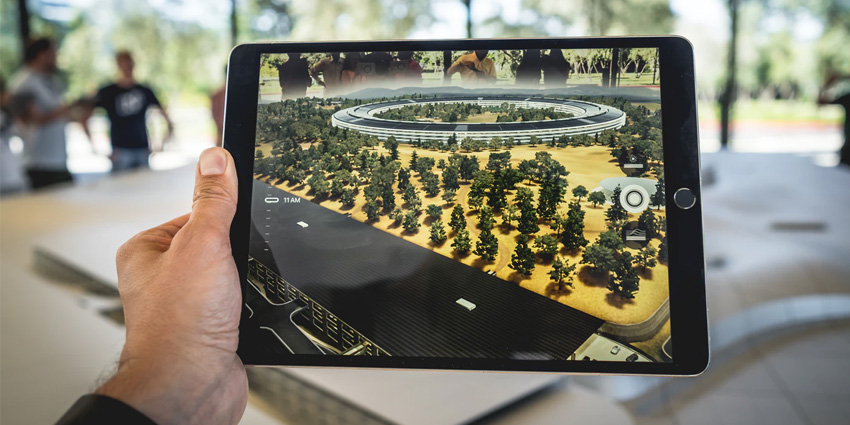Gartner tells us that by the time we hit 2022, 70% of companies will be exploring immersive tech, like extended reality, and AR. Combining virtual and real-world experiences means that AR can create more interactive and engaging moments for people in all environments.
Consumers are already seeing the benefits, with impressive apps that allow them to picture a new piece of furniture in their home before they buy it. However, it’s not just consumers that benefit; it’s businesses too. Augmented reality can help to nurture some of the best collaborative and productive experiences in the workplace.
Let’s take a look at what businesses can accomplish with this technology.
Augmented Reality for Collaboration
Extended realities have a lot of benefits to offer when it comes to connecting people across geographical boundaries. In the future, we could use the basics of AR to make it seem like you’re flicking through a 3D proposal in your office or exploring the components of products in real-time. Augmented reality services could also help you to see your coworkers seemingly sitting in the chairs around your desk when they’re miles away.
In the field service environment, augmented reality is on its way to becoming more entrenched in the landscape already. Using a head-mounted device, technicians might be able to see overlays of equipment and access help from a distance specialist at the same time, for step-by-step instructions on what to do next.
AR solutions like this might even improve the way that companies train and support technicians in the years to come.
Augmented Reality for Product Development
AR technology can support all kinds of employees by providing them with the information they need at the best possible time. For instance, in a warehouse, AR headsets could help with things like product assembly, packing, picking, and even inventory management. A worker could see the instructions on what to do next through the headset, and scan barcodes of items instantly.
Augmented reality also provides a more cost and time-effective way to create new products in the first place. In the manufacturing and engineering landscapes, a single mistake on a product could damage the entire business, and lead to issues with excessive waste.
Augmented reality provides an excellent solution for spotting errors in the manufacturing process instantly. It’s also an opportunity to build 3D blueprints of items before you use any real resources. This means that designers and developers can present a potential solution to a business leader and get approval before production starts.
Augmented Reality for Training and Education
In the educational landscape, many schooling facilities are already experimenting with virtual and augmented reality to engage and connect with students. However, there’s also plenty of potential here for training professional team members too. With augmented reality, you can allow your employees to work in immersive environments that simulate real-world conditions. You can show them all the inner workings of a product without actually having to take an item apart.
Companies like Walmart are already relying on extended reality as a way of training employees. Other companies are looking to augmented reality as a way to turn an otherwise boring or dangerous experience into something safe and exciting. For instance, students in a medical facility could learn how to perform a procedure with an AR patient, rather than having to look at cadavers or diagrams.
Augmented reality also means that you can provide the same level of in-depth training to a team member regardless of where they’re located. People don’t’ have to come into a specific environment to learn about the tools they’re going to be using every day.
Airlines are using AR to provide supplemental training for the engine mechanics and the flight crew of groups in Japan. Elsewhere, businesses are replacing standard playbooks and user manuals with more interactive experiences through AR.
Could AR Change Your Workplace?
Augmented reality has the power to change many aspects of the world that we work in. By offering access to things like in-depth employee training scenarios and unique manufacturing initiatives, AR can save money, time, and boost productivity too.
At the same time, it makes every day experiences like assessing analytics and reports much more engaging and exciting. In the future, as AR becomes more accessible for businesses of all sizes, it could become a key component of keeping employees on the cutting edge in your business landscape.







